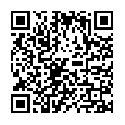In a mobile-first environment, marketers need to ensure they are providing highly-customised mobile-friendly experiences both in-browser and in-app.
Google recently announced that this is the case in 10 major countries, including Japan and the US. According to research from the IMRG, mobile devices now account for 45% of all visits to ecommerce sites, and with mobile sales up by 27% in Q4 last year and climbing.
So what do brands need to do to gain agility in the mobile marketplace and increase conversion rates in an increasingly competitive market?
The shift in attitude has been monumental and the app market has grown exponentially over the last few years, with some of the largest companies on the planet depending on it.
Google’s recent statement that it has changed its algorithms to begin indexing mobile apps means that whereas before a click would definitely lead to a specific browser page, now it can lead to the appropriate part of an app, which massively reduces friction, creating a friendlier user experience.
When you consider that 89% of consumer media time is spent in apps, it is easy to see that if a brand is able to engage with a customer in app, then there will be greater loyalty when compared to doing so within a browser.
People constantly refine the number of apps on their device, compared to the vast swathes of pages they open within their browser, so having an app is often a mark of loyalty and signals that it’s a key step on that consumer’s path to purchase.
With this in mind, to a loyal customer, an in app advertisement is going to go a lot further than a standard banner ad on a web page. For the brand, getting it right will mean greater engagement, higher spend and brand advocacy through recommendation via social media and word of mouth.
Despite this, apps are an often overlooked resource. Although mobile browser optimisation is crucial, the technological similarity to desktop means that marketers are already well versed in honing their web pages and collecting data.
Native mobile apps however, are developed from the ground up and are hard-coded, requiring app developers to modify them ahead of marketers re-submitting them to app stores. However, marketers can take the following steps to begin optimising their native apps:
The personal touch. Use data to pinpoint specific consumers with user-defined in-app offers and preferential content based on multi-channel user-level profiles that combine information from every channel and touch point.
Optimise the experience. The effectiveness of app pages can be split tested to see what works best. The ability to swap in content in real-time will give more accurate and versatile results. Creativity is key as minor changes, such as the colour and shape of a buy button, could drastically affect conversion rates.
Dynamic data collection. Integrate tagging to your apps. By collecting data from app usage you can analyse it alongside other channels at the user level to gain nuanced insight to the consumer.
Forward-thinking marketers are increasingly realising that native app optimisation will pay dividends further down the line.
A smartphone screen is the first thing someone looks at in the morning, and the last thing they see at night, so it is essential that marketers get to the heart of what the consumer wants.
By using effective testing practices, clever use of data and subsequently delivering a personalised user experience in app, it’s possible to radically boost conversion rates.
The future of marketing is rooted in delivering tailor made experiences across every channel and touch point, be that on desktop, a connected TV or on mobile. Mobile apps are simply the next gold mine that marketers are sitting on, while waiting for the next stop in the consumer journey to become a reality.




